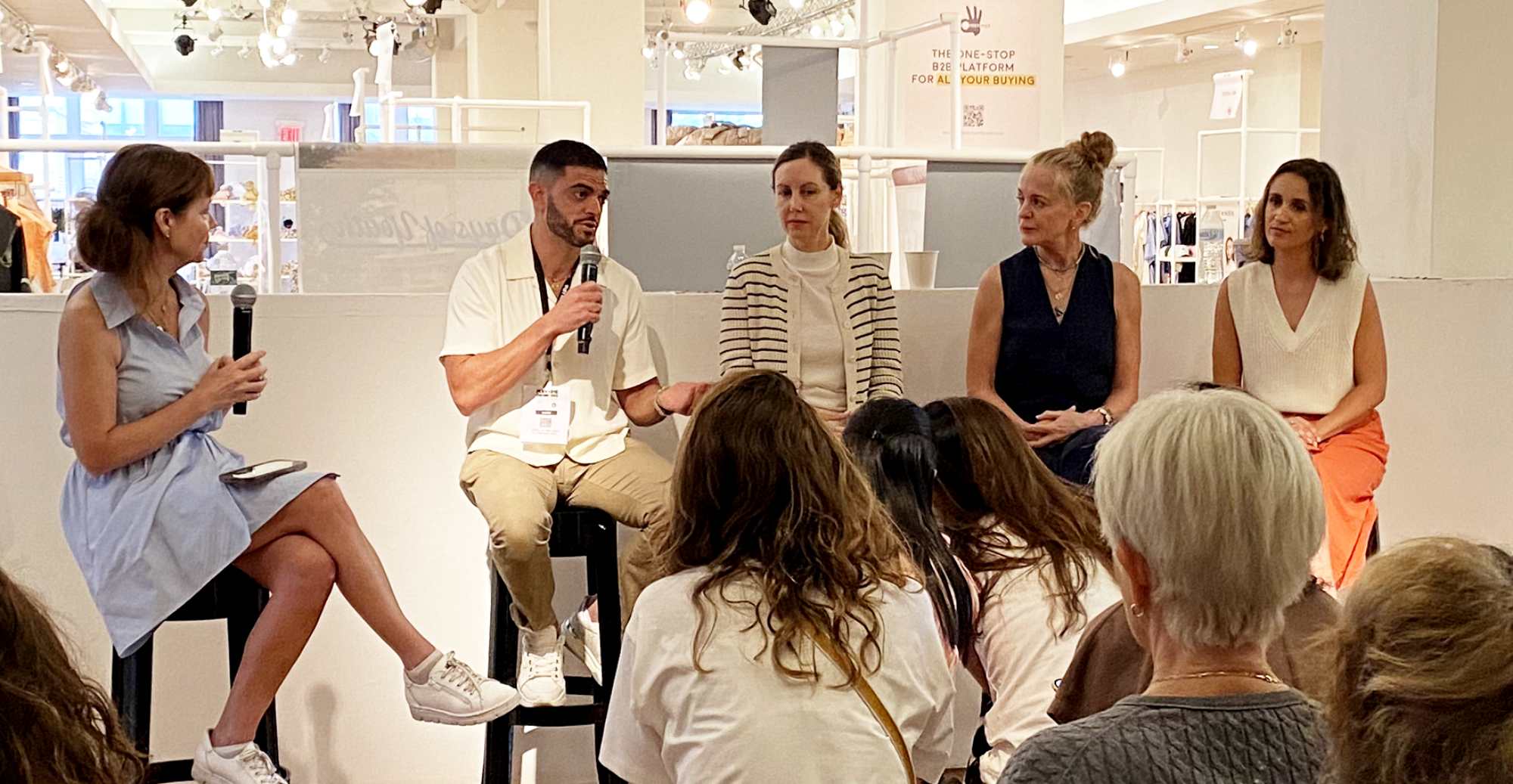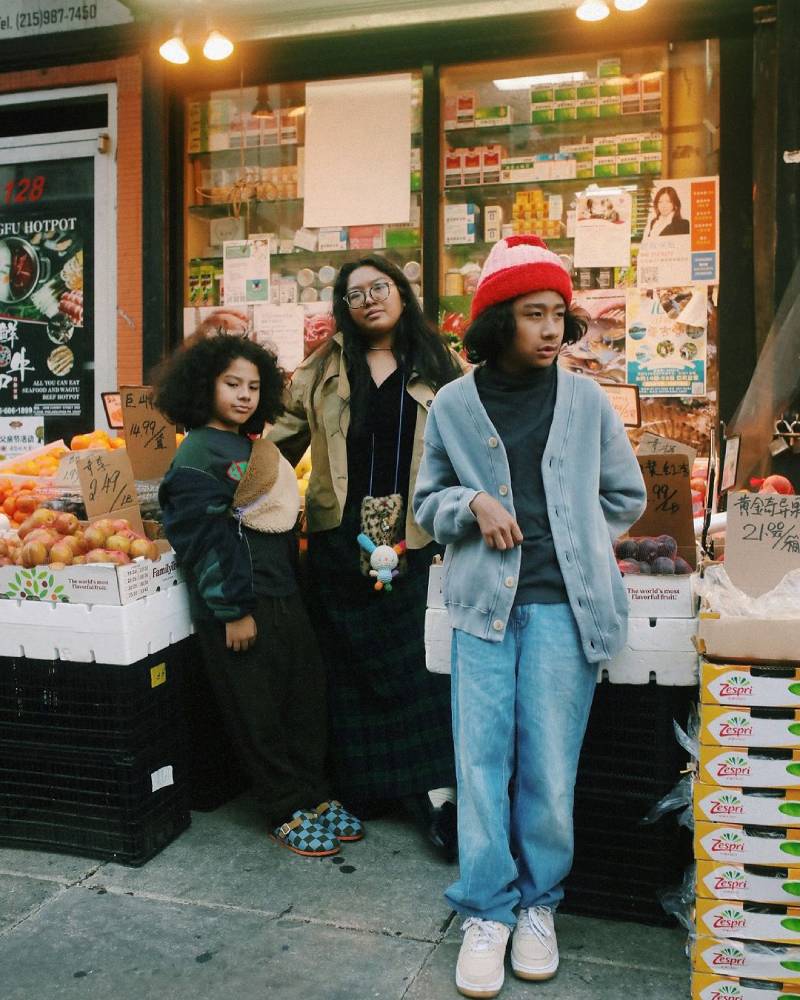This summer at Playtime & Kid’s Hub New York, we gathered a panel of experts to discuss social selling. With platforms like TikTok becoming the shopping source for consumers, this subject is becoming increasingly relevant. In partnership with Earnshaw’s magazine, this seminar explored the subject in depth. The panel offered advice for both brands and retailers on how to incorporate social selling into their strategy. You can rewatch the full seminar anytime here on our Instagram.
Let’s join these experts once again as they dive deeper into social selling! Written by our partner Jennifer Cattaui, owner of the boutique Babesta, explore more tips and tricks for optimizing social media!
 Social Selling Panel (from left to right): Jennifer Cattaui, Moderator and owner of the boutique Babesta. Dr. Jonathan Snow, Founder and Chief Innovation Officer of Avenue Z and Founder of The Snow Agency. Paige Lauren, Founder of PaigeLauren. Mindi Smith, Founder of The Little Red Planet. Ann Loynd Burton, Editor in Chief, of Earnshaw’s.
Social Selling Panel (from left to right): Jennifer Cattaui, Moderator and owner of the boutique Babesta. Dr. Jonathan Snow, Founder and Chief Innovation Officer of Avenue Z and Founder of The Snow Agency. Paige Lauren, Founder of PaigeLauren. Mindi Smith, Founder of The Little Red Planet. Ann Loynd Burton, Editor in Chief, of Earnshaw’s.Social commerce is having a moment. Instagram, Facebook, TikTok, Youtube: It’s like every social media feed on the block is now offering its own shop, premium retail space that confers oodles of opportunities for brands and retailers.
How much opportunity, you ask? According to a Shopify study, the global value of social shopping is estimated to boom to $2.9 trillion dollars by 2026.
Although often conflated, social commerce is not the same as e-commerce. Jonathan Snow, Co-Founder and Chief Innovation Officer at digital marketing agency Avenue Z, explains that social commerce is when the sale is transacted within the social platform, followers viewing content and checking out in the same app, no link-in-bios required.
Getting into the game is pretty easy. Brands and retailers register their shop and then simply upload their product catalog and tag any products that appear in their posts. Anyone who’s following their feed can click and buy right there and then without leaving their beloved endless scroll.
What’s more, social sales are not just for your followers. Ann Loynd Burton, Editor in Chief of Earnshaw’s and micro influencer, says that brands also get the benefit of search. “If someone searches on their social feed for, let’s say, baby clothes, your brand may come up and someone who didn’t know anything about you is now looking at your shop.”
Snow says shopping by search on social media posts is only poised to get bigger and bigger. « Over 50% of Gen Z prefer TikTok for search over Google, » he notes.
 The Sunday Collective
The Sunday CollectiveSo how do you supercharge this opportunity? Snow says he advises clients to combine organic with affiliate posts and use well-performing posts as ads, a strategy made both easy and efficient by TikTok’s platform.
TikTok Shop has an affiliate marketplace with over 500,000 registered affiliates, qualified as such for having over 1000 followers. “Work with as many as possible. . . Then once you have some organic performance, run ads behind that and really scale it,” he recommends. The same strategy can be used with Instagram, although, Snow says, it’s not as seamless as with TikTok.
Compensation for affiliate posts is a numbers game. You simply put out a commission offer and potential affiliates who hit the offer will post, linking back to your brand’s social shop, and earn as their followers convert in-feed. “Giving 20% commission yields a 5x return, says Snow.
“Most brands would take that all day.”
Of course, for the Direct-To-Consumer business, this may be an excellent strategy, but for multi-brand retailers, whose margins are much tighter, it may not be as feasible.
Mindi Smith, founder of The Little Red Planet, a Hamptons-based ethically-curated children’s boutique, says that these numbers are just too high for a small retail business. To date, her influencer content is organic and not paid, thanks to her loyal high profile clients who summer out East. “My clients act as ambassadors to the brand,” she notes.
Snow says for multi-brands like Smith’s, if a 20%-30% commission is too steep, they can try offering smaller commissions like 5%-10% and free products. “Working within your existing customer base can also be a strong strategy, » he adds. It may just be that some are willing to post for less because of the brand status and alignment.
 Photographer and influencer @playfulmodernkids
Photographer and influencer @playfulmodernkidsBeyond the question of commission, Smith notes, for her there’s the question of what you’re selling via your posts. “It’s different as a retailer. I’m selling a concept, a store, rather than each brand.”
The former creative director and stylist says she employed an agency —specifically on the tech side — while she directed content.
“I contacted a company and asked, ‘What can you do for x dollars a month?’” This strategy is something she recommends for others who feel comfortable with the messaging, but less so with the nuances of the technology.
“For me, their answer was to run ads, specifically dynamic ads. Once you get the pixels working as a well-oiled machine, things start moving. You have to pay to play.”
Smith focuses content on sustainability, her edits, and her curated fashion boxes, dubbed The Little Red Packages — things that make her store unique.
Paige Lauren, the CEO and founder of her own eponymous line of baby clothes, says when she sells on social media (her platform of choice is Instagram), her secret sauce is Shopify Collabs, a service the popular back-end system offers, connecting brands with regular people commissioned to post and drive traffic back to her page.
“These people have 150 or 200 followers, and they post because they actually love the products. They tell their friends and moms’ groups,” she says, noting that collaborators’ authenticity is what makes it so effective.
“It’s like the Tupperware thing on the internet. These collaborators have become part of my sales force. It’s seamless,” Lauren says.
 Scotch & Soda
Scotch & SodaWhether you’re honing your social selling on Instagram, TikTok, or any other platform, the end goal, of course, is to go viral.
“Every time you post, it’s like buying a lottery ticket. Some things increase the odds. On TikTok, you have to have a face, talk to the camera, be casual and jump on trends. On Instagram, you have to use the trending audio,” micro influencer Burton suggests.
“Be a human,” adds clothing brand founder Lauren. “Everyone loves following other humans. I’m more of an introvert, but when I’m an extrovert, I can see it working.”
We feel ready to take on social selling ourselves! Thank you to Jennifer Cattaui and this panel of experts for sharing their insights. We look forward to the seminar with Earnshaw’s each season at Playtime & Kid’s Hub New York! Stay tuned to see what the subject will be at the winter edition February 9-11, 2025…